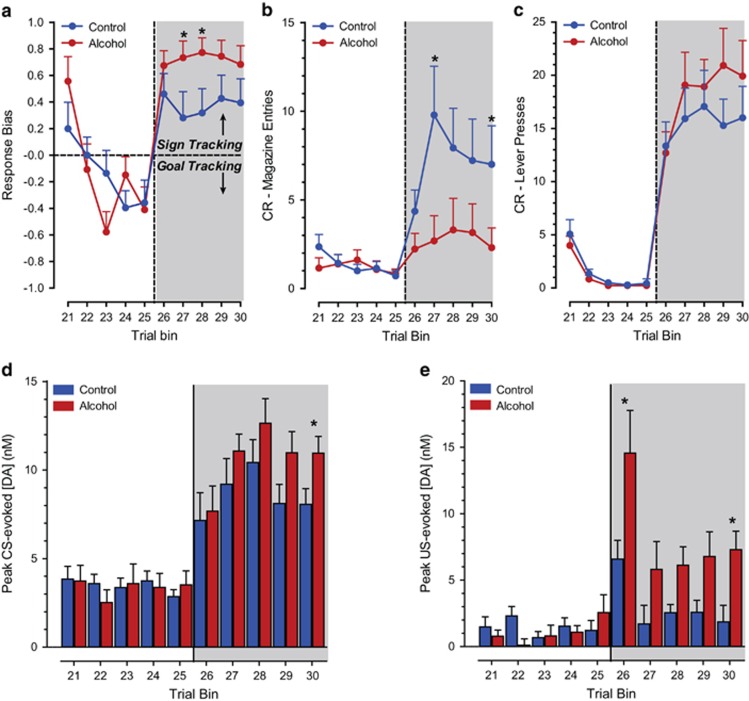Figure 6.
Behavioral (a–c) and dopaminergic responses (d, e) during reacquisition of Pavlovian conditioned approach behavior. (a) Alcohol-exposed animals showed a greater bias toward a sign-tracking response. (b) The CR toward the food cup mainly increased in control animals, whereas (c) both groups increased their CR for the reward-predicting lever. (d, e) CS- and US-evoked phasic dopamine signaling increased during reacquisition in both groups. (d) Adolescent alcohol consumption resulted in higher CS-evoked phasic dopamine release in the final trial bin of reacquisition in comparison to controls, as well as a (e) larger US-evoked phasic dopamine release in the first trial bin. Subsequently, in trial bins 2–5, both groups showed a decrease in US-evoked dopamine release, but signaling remained higher in alcohol-exposed animals. *Indicates significant difference between groups with post-hoc t-tests with a Bonferroni correction (p<0.05).

